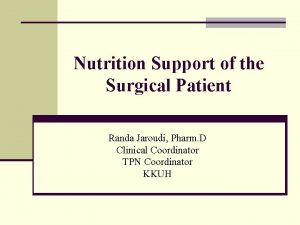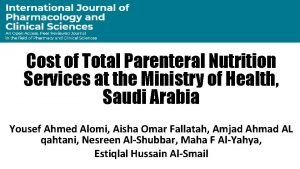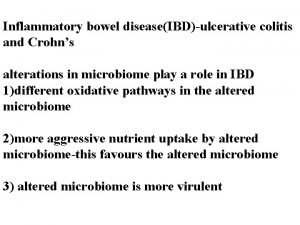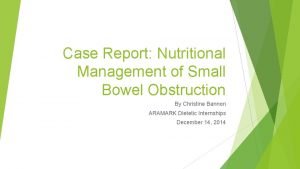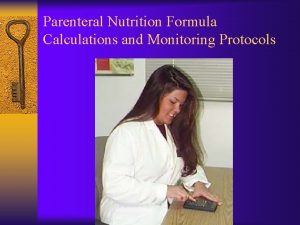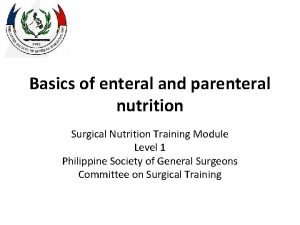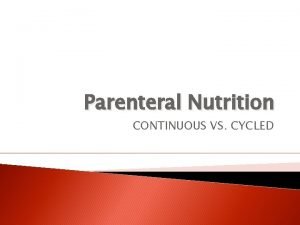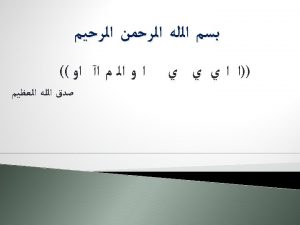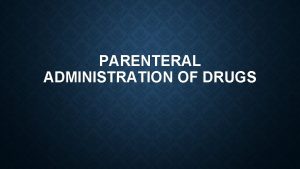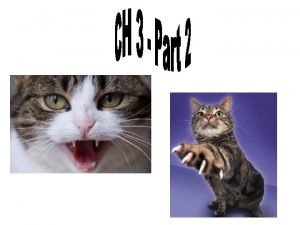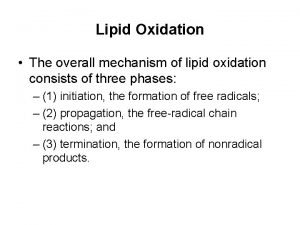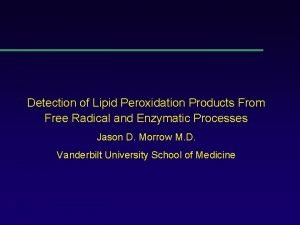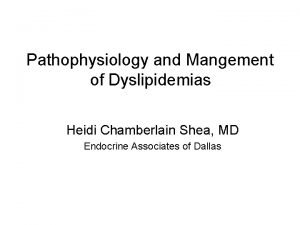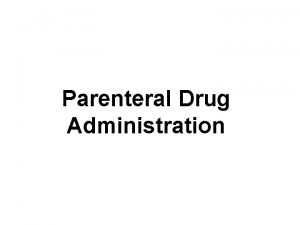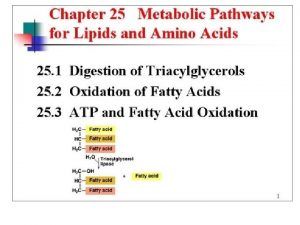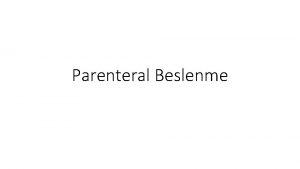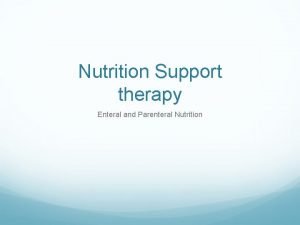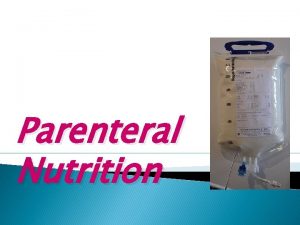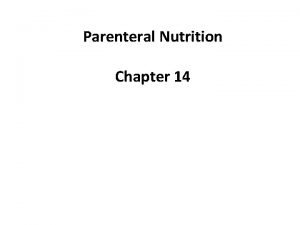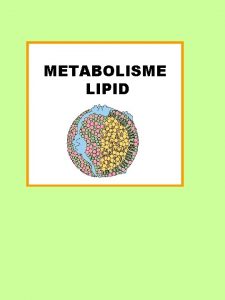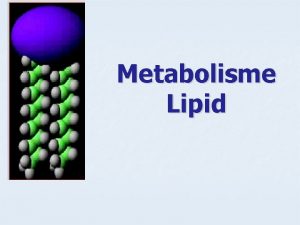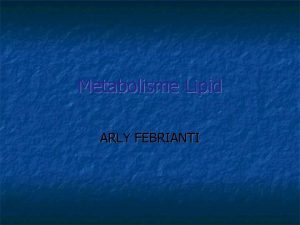Parenteral Nutrition PARENTERAL LIPID ADMINISTRATION Lipid Administration Staff












- Slides: 12

Parenteral Nutrition PARENTERAL LIPID ADMINISTRATION

Lipid Administration Staff will have training and demonstrated clinical competency prior to administering lipids through a venous access device.

General Guidelines Lipid administration requires a physician order. Lipid strength, volume, rate and frequency must be included in physician order. � Lipids are commonly ordered in conjunction with 1 PN/PPN solutions. � Lipids are used to provide calories and/or essential fatty acids to residents who are not able to get sufficient oral intake. � Lipids may be administered mixed with parenteral nutrition or separately. �

General Guidelines An electronic infusion pump must be used with lipids and/or parenteral nutrition (PN). � When lipids are administered concurrently with TPN, the lipid solution may be connected to primary tubing via "piggyback" attached below the filter if possible. A 1. 2 micron filter is attached to the primary administration set (tubing) when lipids are administered. � The pharmacy may mix a 3 in 1 solution of PN with lipids which is delivered and administered as one bag. �

General Guidelines Lipids can be administered through peripheral or central catheters if separate from PN. � Aseptic technique should be used at all times when administering lipids. � Lipids expire 24 hours after being started. � Lipids that are not mixed with PN solutions do not require refrigeration. � Lipids must be inspected for signs of instability and deterioration prior to administration. Signs of instability include discoloration (other than white color), separation, oily appearance, and/or inconsistent texture. �

General Guidelines NEVER SHAKE LIPID CONTAINER or add anything to lipids; this could cause aggregation of fat globules. � No other medications or fluids are to be attached or added to the lipid solution. � Lipid administration is contraindicated in residents with: �allergy to egg yolk; �hepatic disease; �hyperlipidemia; or �blood coagulation defect caused by a depressed platelet count. �

General Guidelines � Monitor the resident receiving lipids for: �signs/symptoms of adverse reactions such as fluid overload, chest pain, nausea, shortness of breath, abdominal pain, or wheezing; �lab results for levels of triglycerides, cholesterol, and liver enzymes; and �any signs/symptoms of catheter or resident infection. � Administration set (tubing), needleless connection device, and container must be changed every 24 hours or when new container is started.

Equipment and Supplies �To ◦ ◦ ◦ ◦ administer Lipid solution you will need: Lipid (or 3 in 1) solution Needleless connection device Electronic infusion pump Administration set (tubing) Non-sterile gloves Alcohol wipes 1. 2 micron filter Normal saline flushes (1 -2)

Administration of Lipid Procedure � Procedure 1. Inspect lipid solution for discoloration or other signs of breakdown (separation, oily appearance, inconsistent texture). Do not administer if any signs of problems are observed. 2. Verify resident name, type of solution, rate, route and time. 3. Assemble solution, tubing, needleless connection device, normal saline flushes, and alcohol wipes. 4. Perform hand antisepsis. Don non-sterile gloves. 5. Place tubing in container and prime tubing.

Administration of Lipid Procedure � Procedure 6. Close clamp on tubing, replace needleless connection device, and flush catheter with normal saline (per protocol). 7. To run "piggyback" into primary PN tubing, place at most distal side port (Y site) after cleansing port with alcohol. 8. Place tubing into pump and set rate as ordered. 9. Start pump and observe flow. 10. Note resident response to procedure.

Documentation � The following should be documented in the resident’s medical record: ◦ Date, time, amount, and flow rate of lipids administered. ◦ Solution and equipment change. Document in the treatment administration record. ◦ Any observation facts related to catheter insertion site, problems with solution, resident reactions. Any interventions that were done. ◦ Intake and output if ordered.

Reporting Report any complications with treatment to Physician, Supervisor, and oncoming shift. � Report any problems with solution to pharmacy. � Report resident reaction to procedure. � Report other information in accordance with facility policy or professional standards of practice. �
 Complication of parenteral nutrition
Complication of parenteral nutrition Total parenteral nutrition cost
Total parenteral nutrition cost Types of parenteral nutrition
Types of parenteral nutrition Small bowel obstruction medical nutrition therapy
Small bowel obstruction medical nutrition therapy How to calculate calories in dextrose solutions
How to calculate calories in dextrose solutions Rxkinetics osmolarity
Rxkinetics osmolarity Tpn tapering guidelines
Tpn tapering guidelines Complication of parenteral nutrition
Complication of parenteral nutrition Parenteral route of administration
Parenteral route of administration Non parenteral
Non parenteral Lipid oxidation
Lipid oxidation Lipid
Lipid Lipid classification
Lipid classification
